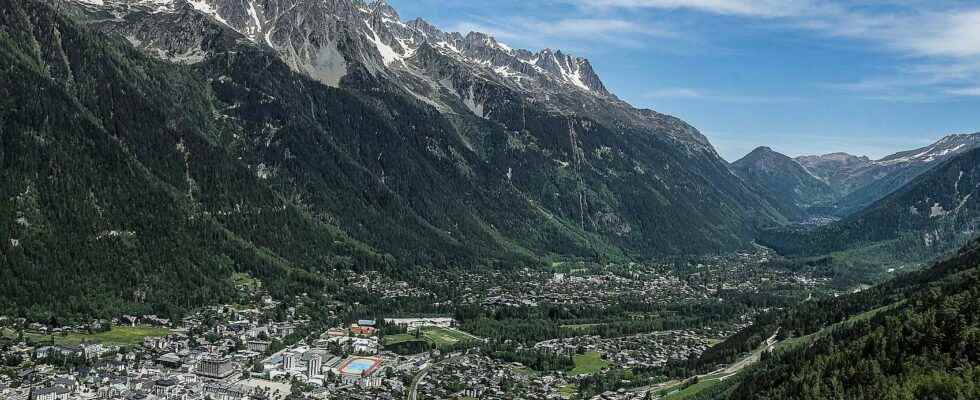You will also be interested
[EN VIDÉO] COP21: Mont-Blanc glaciers threatened by global warming Satellites have enabled glaciologists to observe a record thinning of 12 meters per year in the glaciers of the Mont-Blanc massif in their lowest part. The Cnes offers us a video update on this worrying situation.
It is a true symbol of the natural history of the Alps which collapsed on Sunday July 3 in Italy. Part of the Marmolada Glacier, which rises to 3,343 meters above sea level in the Dolomites, collapsed with several victims. An event that occurred the day after an absolute record of heat recorded in the area, with an exceptional temperature of 10°C.
According to Ludovic Ravanel, CNRS geomorphologist and mountain climate change specialist, thecollapse of the glacier in the Italian Alps is linked to climate change ” obviously”, and this for many reasons. ” Temperatures recorded on a recent scale, and temperatures recorded over the past 30 years. The 10°C recorded the day before favored the melting ice and melt water may have accumulated under the glacier, the water increased the pressures hydraulics, it can lead to a rupture under the glacier or between several masses of ice. When we watch the videos, we notice the amount of water that emerged during the event, which reflects a very significant melting linked to abnormal temperatures. But you should also know that all alpine glaciers have been in a retreat phase since the 1990s due to three decades of heat. »
Several glaciers are at risk of collapsing in France
The The French Alps are also strongly affected by global warming. On June 18, the summit of Mont Blanc also broke an absolute heat record with 10.4°C. ” France will also experience destabilizing glaciers due to pockets of water,” says Ludovic Ravanel. Remember that on July 12, 1892, the rupture of a pocket of water inside the Tête-Rousse glacier led to the “Saint-Gervais disaster”, a flood that killed at least 200 people. This Haute-Savoie glacier is followed very closely by the Institute of Environmental Geosciences (IGE) since the late 2000s: the possibility of a water pocket leading to a new disaster is considered very likely. The glacier had to be emptied several times between 2008 and 2012”. The Rochemelon glacier, located in Italy at 3,538 meters above sea level, also presents a risk for the French valley of Haute-Maurienne and has already had to be drained several times. On the Mont-Blanc massif, the Takonnaz glacier is also closely watched by theIGE for the danger it represents for Chamonix, it dominates the valley and it is a large avalanche corridor, explains the specialist. Near, the Charpoua glacier has already destabilized, but the risk for the population has been managed because the access path has been diverted”.
With glaciers, the risks are multiple: they can be glacial, with a collapse of ice as in Italy, or periglacial. This last category includes rock avalanches, such as the one in 2017 that hit the Swiss village of Bondo. The thaw of permafrost had caused a gigantic flow of stones that had killed eight people. According to Ludovic Ravanel, ” we are heading towards more events of this type. the permafrost degrades and heats up. There will be more flows and bigger volume, so it will affect the valleys more. Risk is also a combination of climatic hazard and vulnerability”. More urbanization of mountains and valleys obviously leads to greater disaster risk.
The next disaster will be unpredictable
How to prevent the risk and contain the pieces of ice that will come off? ” There are several ways that work quite well, explains the specialist, we make sections of avalanches to contain the avalanches and blocks of ice. The principle of the white tarps also works very well, they do what the snow should do in the spring, that is to say limit the melting by returning the sun’s rays to the atmosphere, but they can only be used very locally , not to cover an entire glacier. »
The main problem according to Ludovic Ravanel is the unpredictability of ruptures: ” In Italy, there was no warning signal. The next event will surprise us anyway. The mountain population must report information on abnormal events, such as flows, because there are not many scientists who study glaciers and we cannot put all the alpine glaciers under surveillance. »
Reading ideas for the summer with Futura?
To celebrate the start of the holidays, we offer you the Mag Futura at the preferential price of 15 € instead of 19 €, i.e. a reduction of 20% !
What is Mag Futura?
- Our first paper journal of more than 200 pages to make science accessible to as many people as possible
- 4 major scientific questions for 2022, from the Earth to the Moon
- Home delivery*
*Special offer valid until July 19. Delivery is made in France (excluding metropolitan France), Switzerland, Belgium.
Interested in what you just read?
